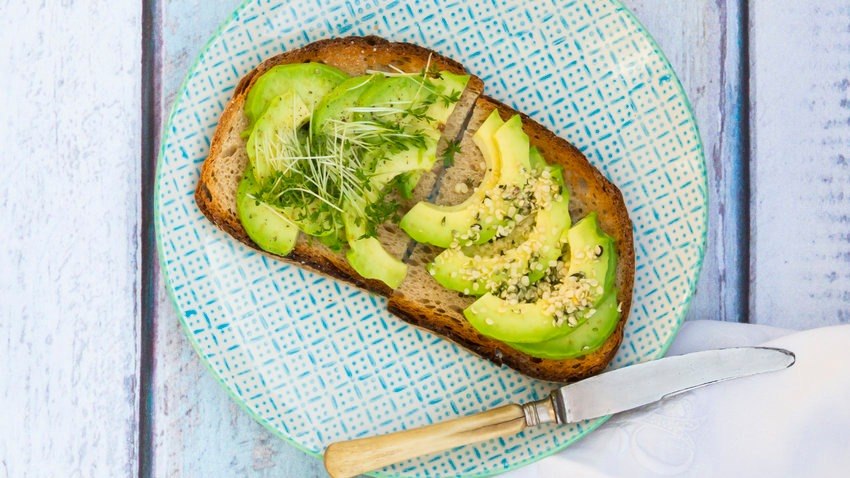Decrease cholesterol with these 5 foods
 Health & Fitness
Health & Fitness
You've probably seen certain foods touted as helpful for lowering cholesterol. But how exactly are diet and cholesterol connected?
Let's back up for a minute. In case you need a quick refresher on cholesterol, we all have two natural types in our bodies: HDL, the “happy” or good kind, and LDL, the “lousy” kind. In general, having a high HDL is healthy, while having a high LDL is linked to an increased risk of heart disease.
That’s because LDL tends to clog and harden arteries, whereas HDL carries LDL away from the arteries to your liver to be eliminated. HDL also seems to protect against damage to blood vessels (a major precursor to hardened arteries).
Then there’s dietary cholesterol, found in animal-based foods. Experts used to think that eating high-cholesterol foods—like egg yolks and shrimp—raised total blood cholesterol levels. Newer research has shown that’s not true.
But what we do know for certain is that other foods (think oats and almonds) can help manage or improve your overall cholesterol profile, and reduce your risk of heart disease. Below are my top five picks for these “cholesterol helpers”—plus easy and tasty ways to eat them more often.
Pulses
Several studies have linked pulses—the umbrella term for beans, lentils, and peas, like chickpeas—to cholesterol reduction. One study, published in the Canadian Medical Association Journal, found that a 3/4 cup of pulses daily lowered lousy LDL cholesterol by 5%. That may not sound like much, but it is a significant drop.
Pulses are truly one of the most versatile food groups, since they can be consumed in both savory and sweet dishes, and are found in many forms, including whole beans, purees like hummus, pulse flours, and products like pulse-based pastas. Add beans to an omelet or whip chickpea flour into a smoothie. Snack on oven-roasted chickpeas or veggies with lentil dip. Add beans or lentils to salads or soups, use pulse noodles in place of wheat versions, and swap all-purpose flour for chickpea or fava bean flour in baked goods. You can even use a hummus or pureed split peas or lentils in place of creamy sauces.
Avocado
In a Pennsylvania State University study, researchers placed overweight adults on a low- or moderate-fat diet, with or without avocado. While the low-fat diet decreased LDL by 7 mg/dL, the moderate-fat diets produced even better results: The non-avocado eaters had an 8 mg/dL reduction in LDL, and the avocado group had a 14 mg/dL reduction.
Avocado goes with just about everything! Spread it on whole grain toast, whip it into a smoothie, add it to an omelet, frittata, or salad. Use it to garnish soups, chili, fish, chicken, beans, hummus, whole grains, or veggies. You can also scoop up guacamole with raw veggies as a snack, use avocado in place of butter in baking, and even whip it into creamy puddings and sauces.
Oats
Oats are a well-known cholesterol-lowering superfood. In one Thai study, people with high cholesterol were given either oatmeal or rice porridge for four weeks. The people who had the oatmeal experienced a 5% reduction in total cholesterol, and a 10% slash in their LDL.
At breakfast, oats can be whipped into smoothies, toasted and sprinkled over fresh fruit, folded into energy balls, layered in parfaits, or added to acai bowls. Of course, there are dozens of variations of overnight oats these days. Plus oatmeal can be served savory as well as sweet. Make it with low-sodium organic vegetable broth instead of water and add shredded zucchini, minced onions, mushrooms, garlic, and Italian herb seasoning. Then top with a sunny side up egg.
You can also use oats to coat baked fish or chicken (in place of breadcrumbs), and as a filler in meatballs, meatloaves, or patties. And oats and oat flour are staples for cookies and healthier baked goods and desserts. I even stir them into melted dark chocolate, along with cinnamon, ginger, and shredded coconut, to make “haystacks.” Another nutritious dessert idea: Fold oats into almond butter with pumpkin pie spice, and use it as a crumble topping for sautéed fruit (aka mock cobbler).
Almonds
A study published in the Journal of Nutrition found that among heart disease patients, consuming just 10 grams of almonds before breakfast (that's about 8 almonds), significantly upped levels of protective HDL. At week 6 the subjects’ good cholesterol values were 12-14% higher, and by week 12 they were 14-16% higher, compared to baseline levels.
In addition to snacking on whole almonds, you can use almond butter and almond flour in many meals and snacks. Whip almond butter into smoothies, add to oatmeal or parfaits, spread it on whole grain toast, or slather it onto sliced fruit. Add savory seasonings—like garlic and fresh ginger—to almond butter for a savory sandwich spread, or thin out the mixture with organic low-sodium vegetable broth to make a sauce for steamed or stir-fried veggies. Crushed almonds or almond flour can also be used to encrust fish or poultry. Plus, sliced almonds make a terrific garnish for any stir-fry, cooked whole grain, or cooked veggie dish.
Almond butter is also the base for many energy ball recipes, and all forms of almonds are staples in baking and desserts. I use almond flour along with chickpea flour to make gluten-free brownies and pumpkin spice muffins. I also love to stir chopped or sliced almonds into melted dark chocolate, along with chopped dried cherries and ginger, to make bark.
Green tea
One strategy for curbing heart disease risk is lowering LDL without also lowering HDL. The good news? Green tea seems to do the trick. A meta-analysis of research published in the American Journal of Clinical Nutrition found that green tea consumption significantly lowered total cholesterol levels (by more than 7 mg/dL), and significantly reduced LDL values (by more than 2 mg/dL) without any effect on protective HDL.
In addition to sipping hot or iced green tea, you can incorporate the brew into your meals. Use chilled green as the liquid in smoothies or marinades. Season warmed tea as a base for soups, or use it to steam brown rice or veggies. Chilled green tea, flavored with fresh ginger, mint or basil, and muddled fresh fruit, is also one of my go-to cocktail ingredients. Try it in a margarita in place of a sugary mixer. Cheers!
Source: health.com




